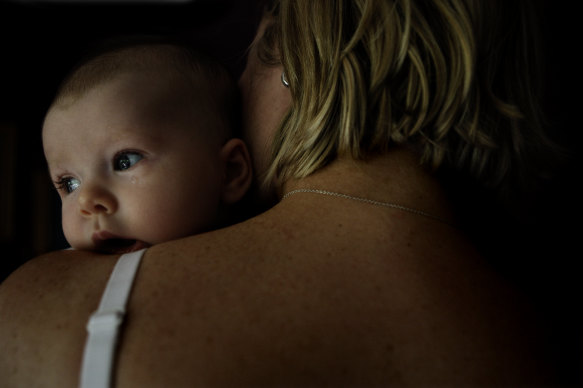By Matt Wade
The number of births in NSW has registered the biggest fall since the early 1980s as housing affordability and cost-of-living pressures discourage people from having children.
There were 92,200 babies born across the state in 2023 – down by 6300 or 6.4 per cent compared with the previous year. That was the biggest percentage decline since 1983, when the economy was recovering from a deep recession.
Analysis by KPMG shows the slump in the number of new babies has been especially pronounced in parts of Sydney. Births in the city peaked in 2018 at 70,400, but last year that had dropped to just 60,860.
KPMG urban economist Terry Rawnsley, who wrote the report, said recent cost-of-living pressures caused by elevated inflation and rising interest rates had affected birth rates.
“Sydney is in the midst of a baby recession,” he said.
“Birth rates give you an insight into how confident households are feeling about the future. So the recent slump in births is an indicator of how much cost-of-living pressures are affecting households and how much housing availability challenges are feeding into people’s behaviour.”

Cost-of-living pressures are discouraging couples from having babies. Credit: Louise Kennerley
The fertility rate, which measures the expected number of births per woman, has declined sharply in Sydney. In 2013, the city’s fertility rate was 1.85 births per woman, but by last year it had fallen to a historic low of 1.57 – way short of the 2.1 “replacement level” needed to maintain a stable population, not including migration.
Fertility rates have plunged to very low levels in many inner-city suburbs including Chippendale (0.63), Darlinghurst (0.69) and Newtown (0.84).
More than 90 per cent of Sydney suburbs have a fertility rate below the replacement level of 2.1 births per woman.
Rawnsley said the high cost of extra housing space in Sydney was influencing the number of children couples are choosing to have.
“In the past, women may have had two or three children, but now they are opting for one or two,” he said. “People are still keen to have children, but often they can’t make the logistics work to have three or four.”
Suburbs with the most births were in the outer suburbs, where housing was more affordable. The city’s highest fertility rate – 2.52 – was in the south-western suburb of Spring Farm, about 63 kilometres by road from Sydney’s CBD. Schofields in the city’s north-west had the most births of any city suburb in 2023 with 550.
“Young families are being pushed to the edges of the city, where there is cheaper housing that can accommodate their children,” Rawnsley said.
Australia-wide, there were 289,100 births in 2023 – down by 4.6 per cent on the previous year and the lowest since 2006. The biggest decline was in Sydney (down 8.6 per cent).
The slump has been less pronounced in regional NSW where births have declined by only 0.3 per cent since 2019.
Get the day’s news, entertainment and a long read. Sign up to receive our Evening Edition newsletter.